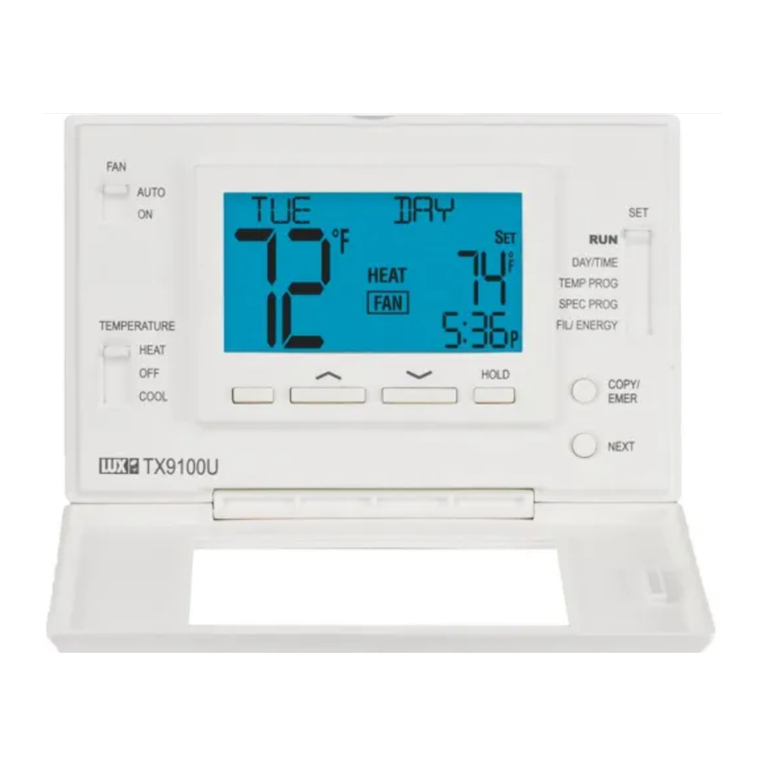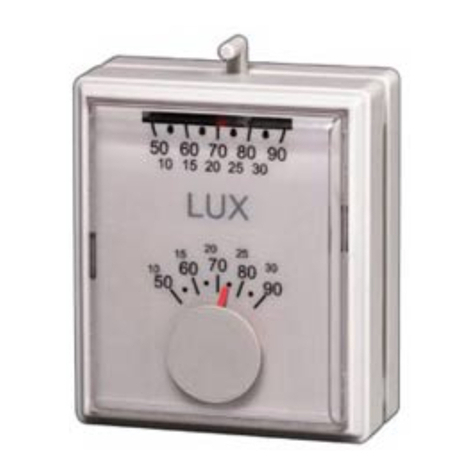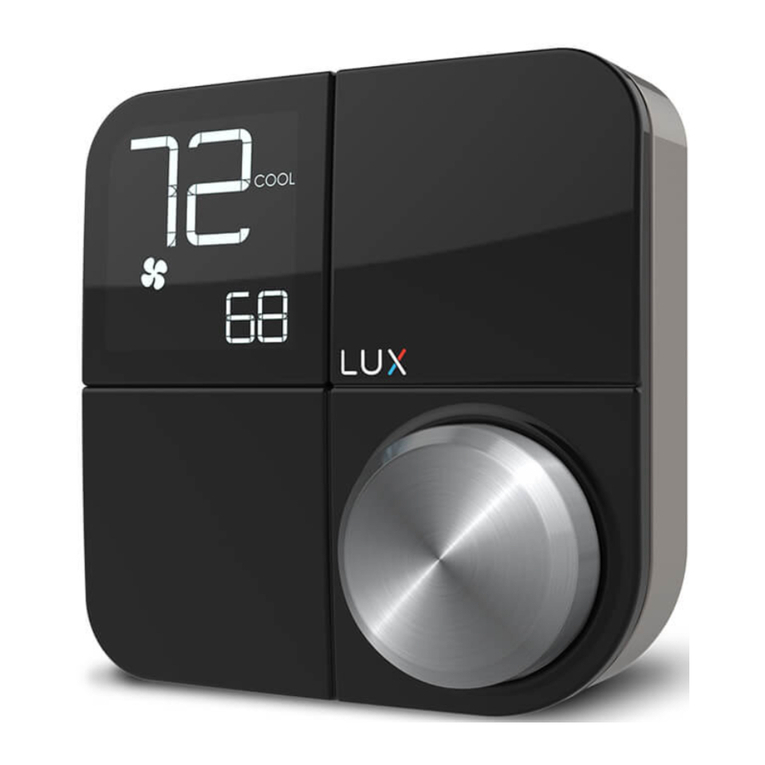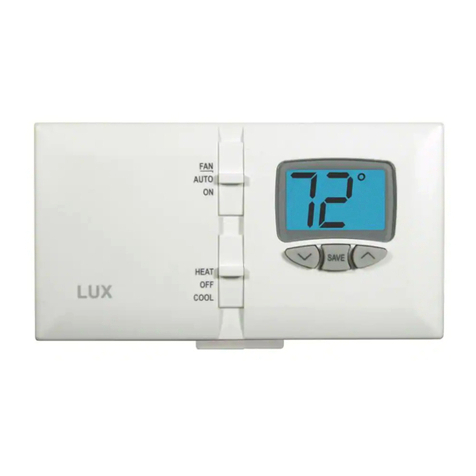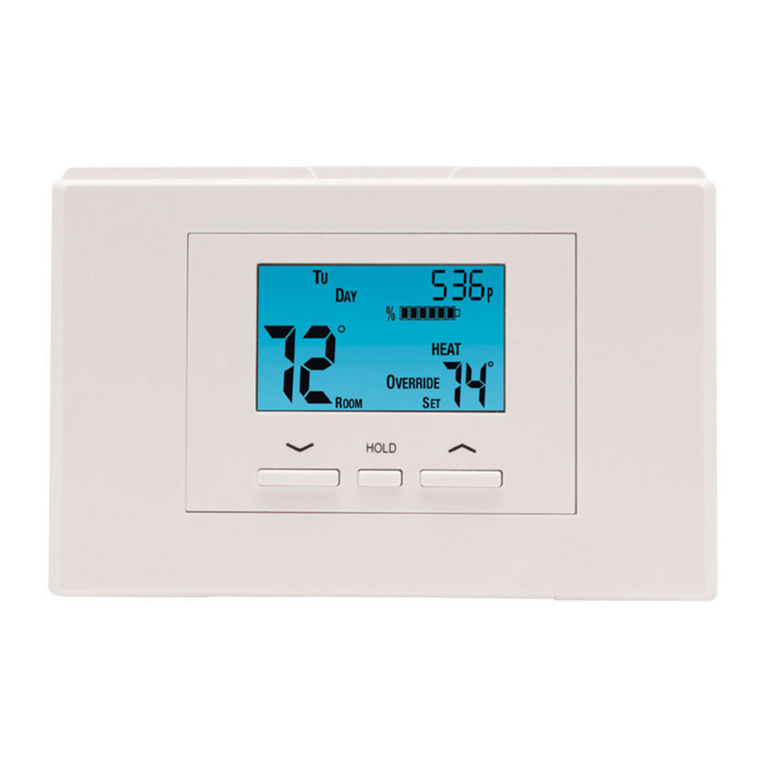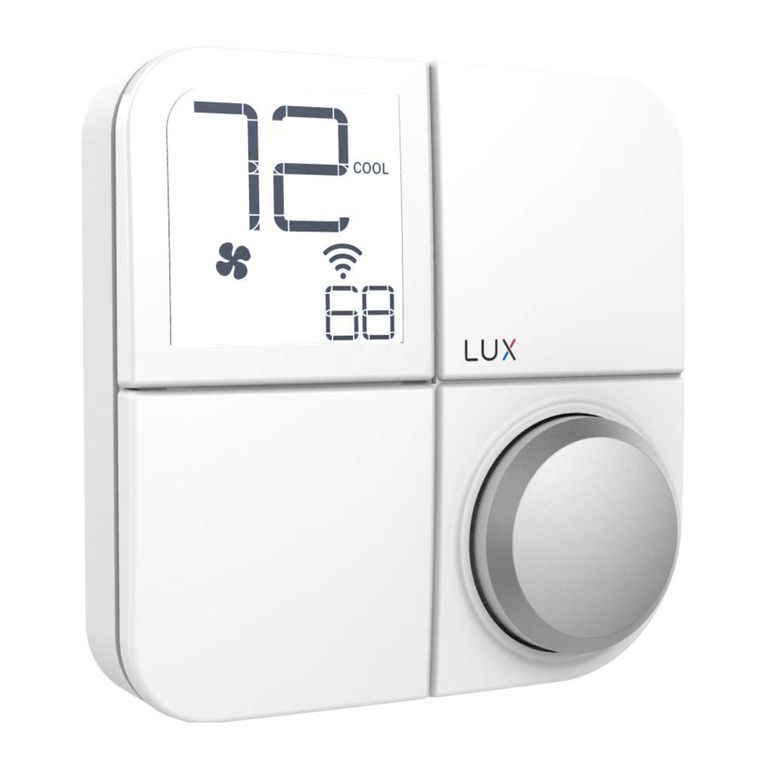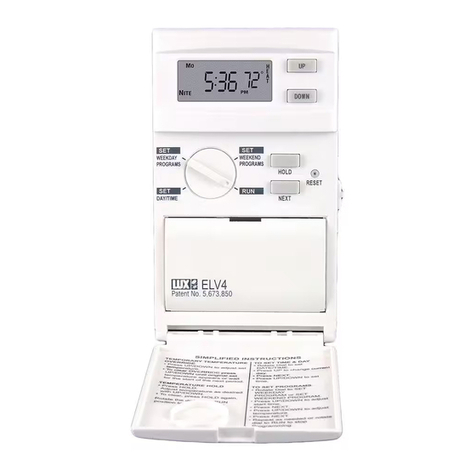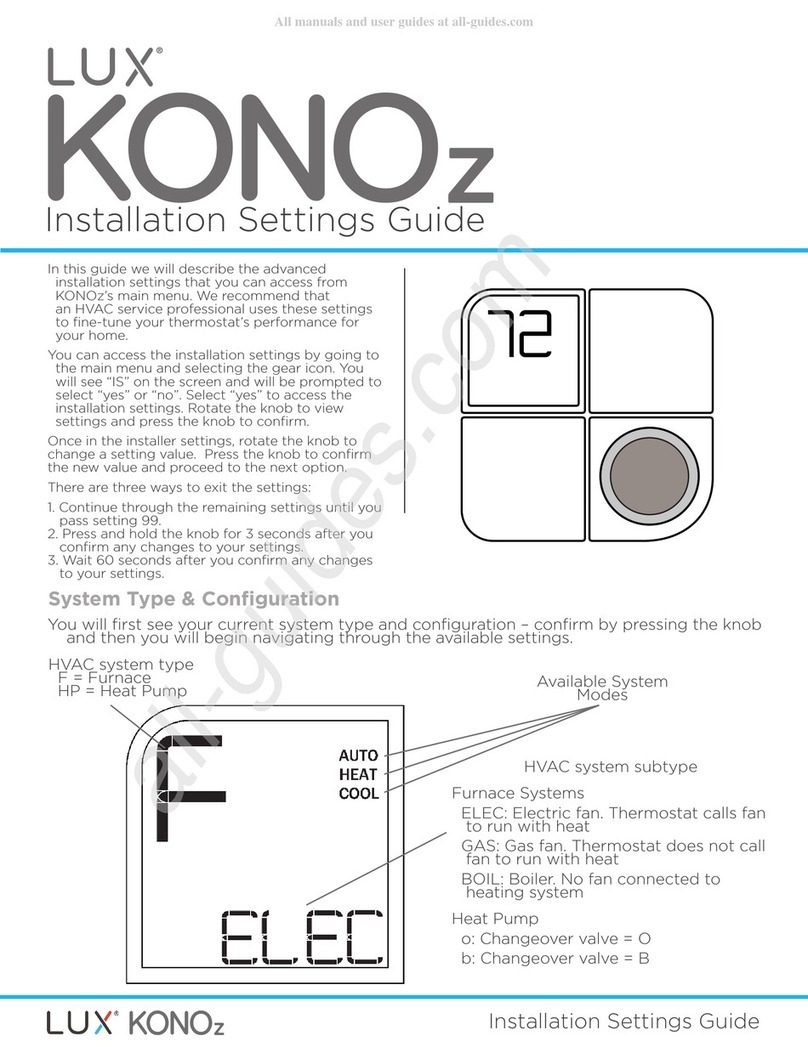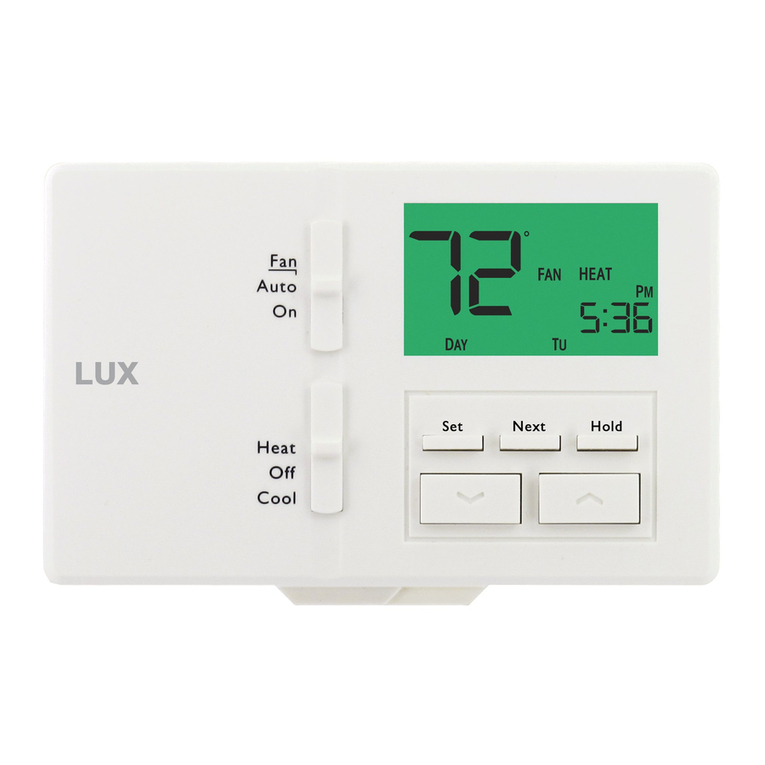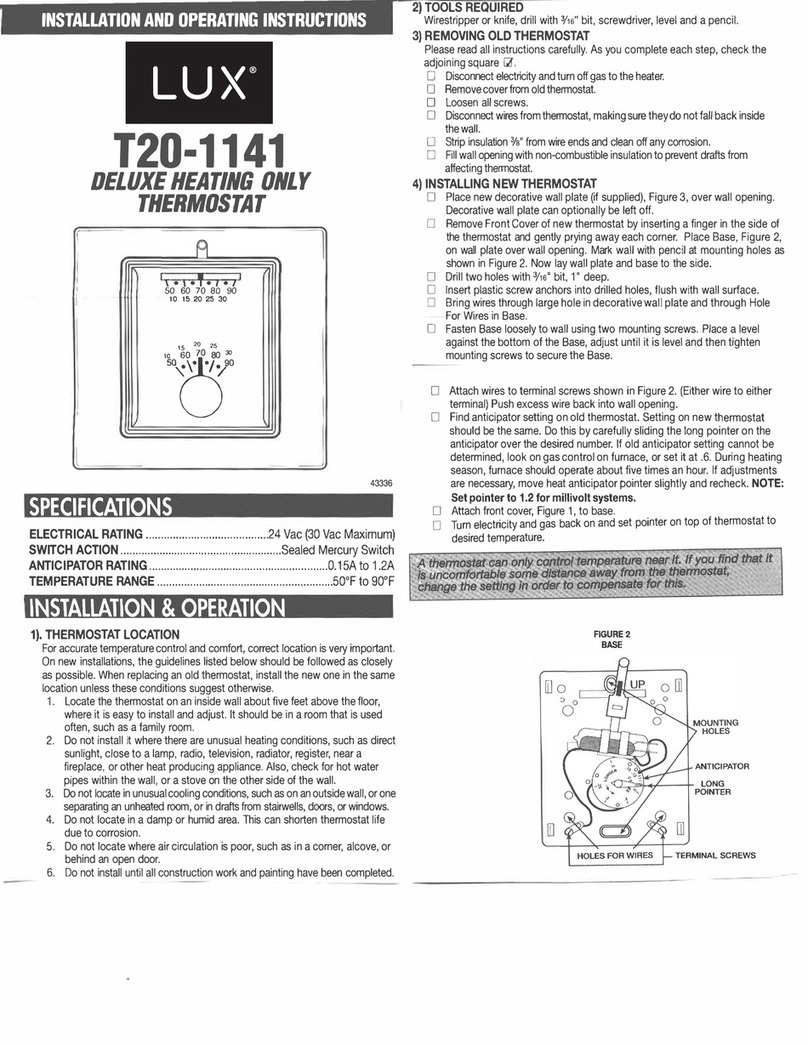LUX TX100Ea User manual
Other LUX Thermostat manuals
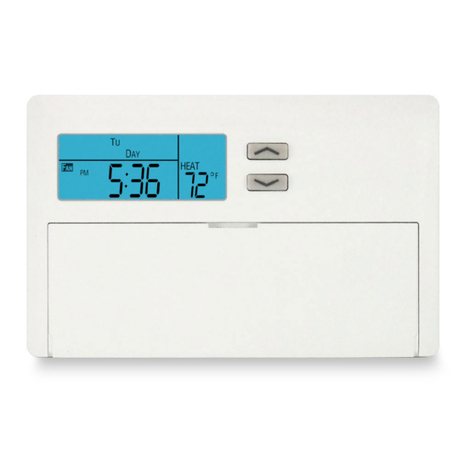
LUX
LUX TX500E User manual
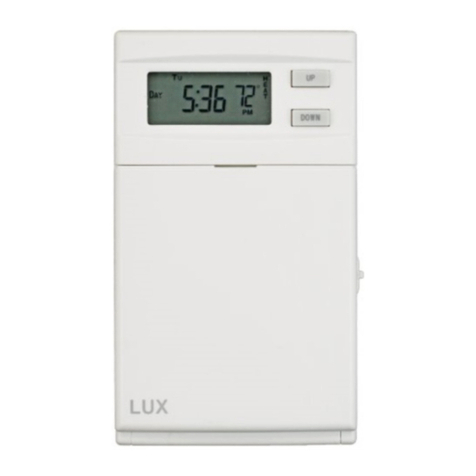
LUX
LUX ELV1/PSPLV510 User manual
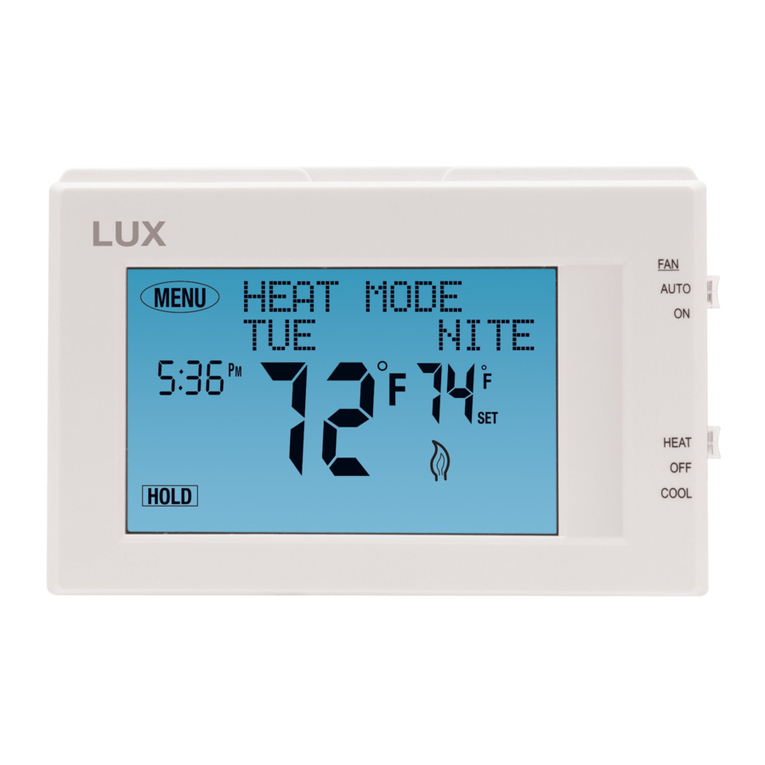
LUX
LUX TX9600TS User manual

LUX
LUX LP0511D User manual
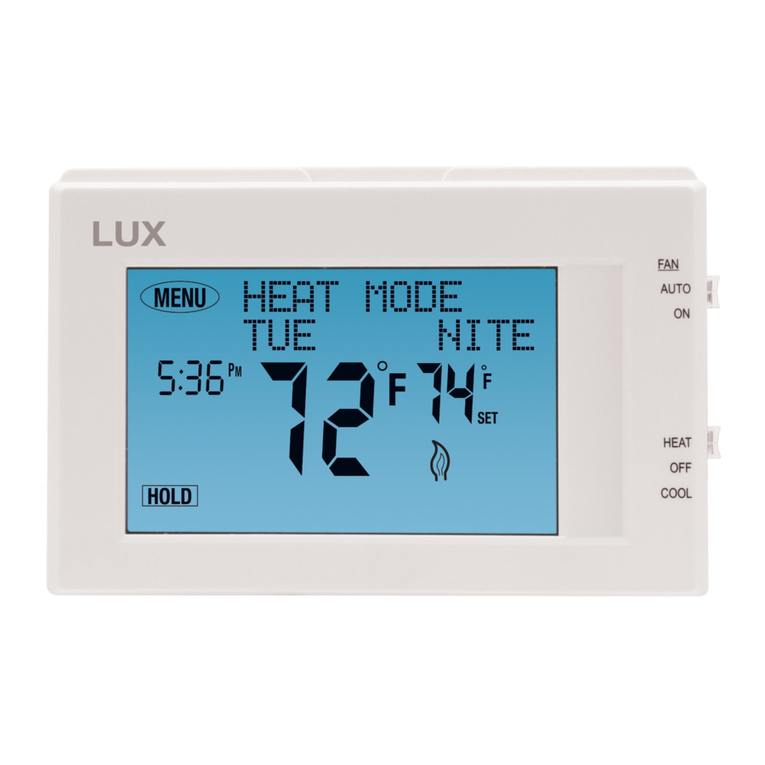
LUX
LUX TX9600TS User manual

LUX
LUX CAG1500 Series User manual
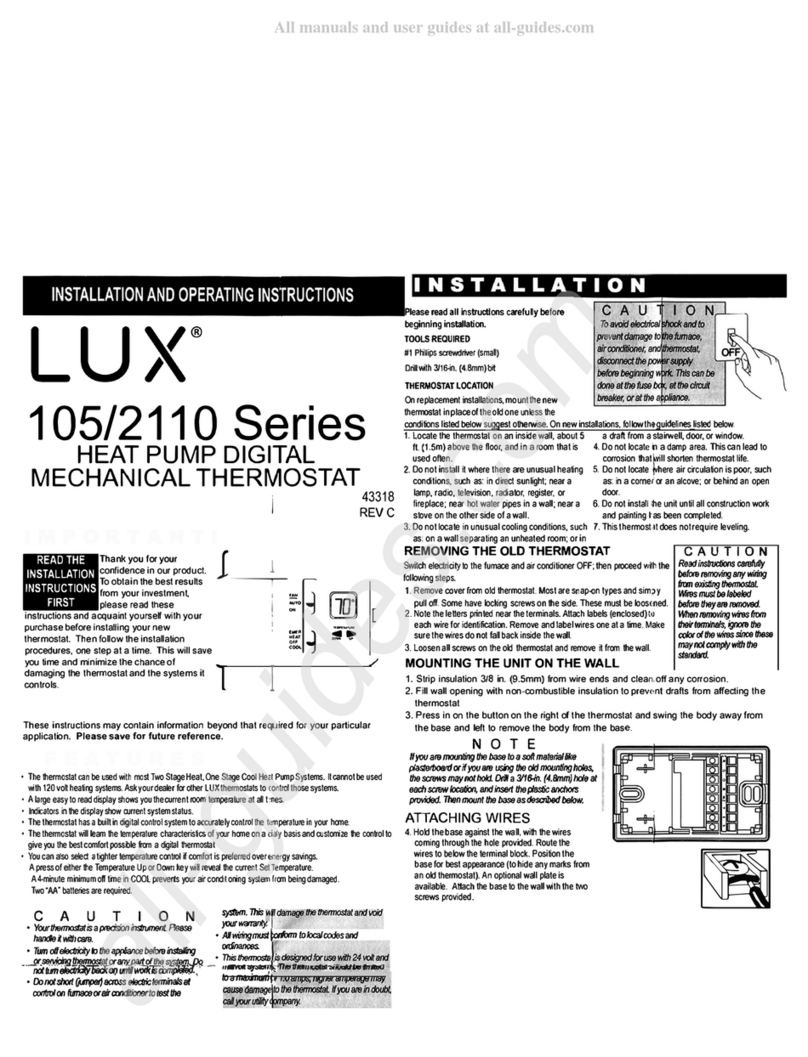
LUX
LUX 105/2110 Series User manual
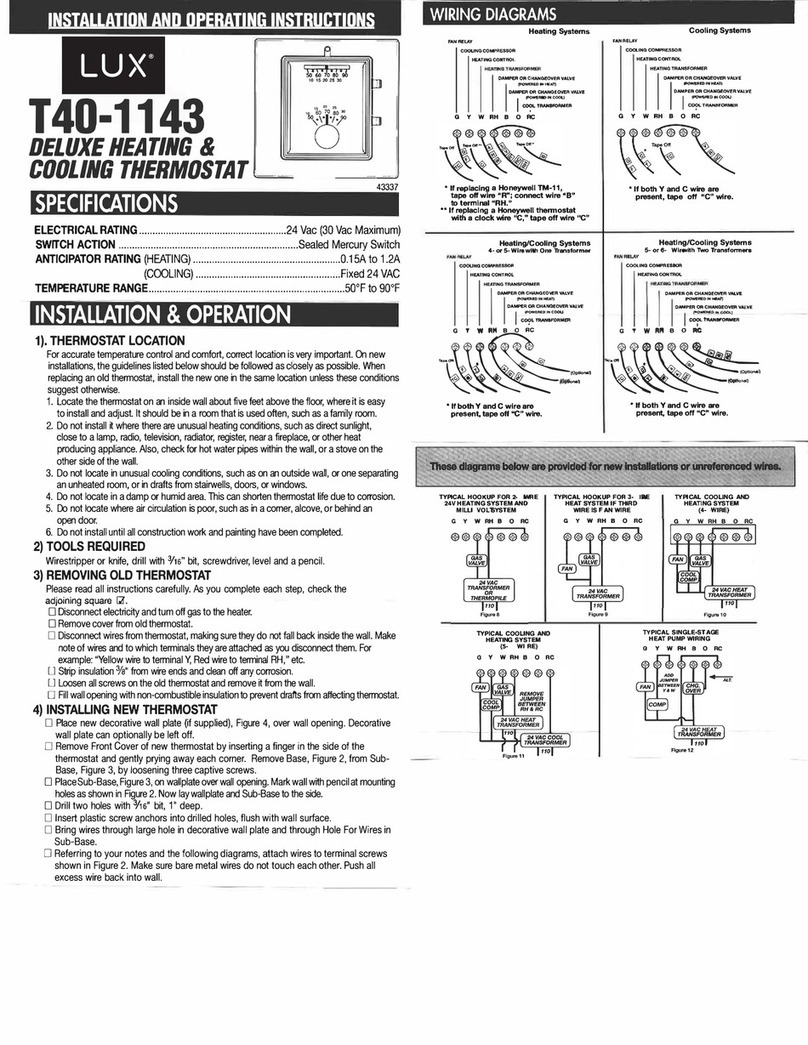
LUX
LUX T40-1143 User manual
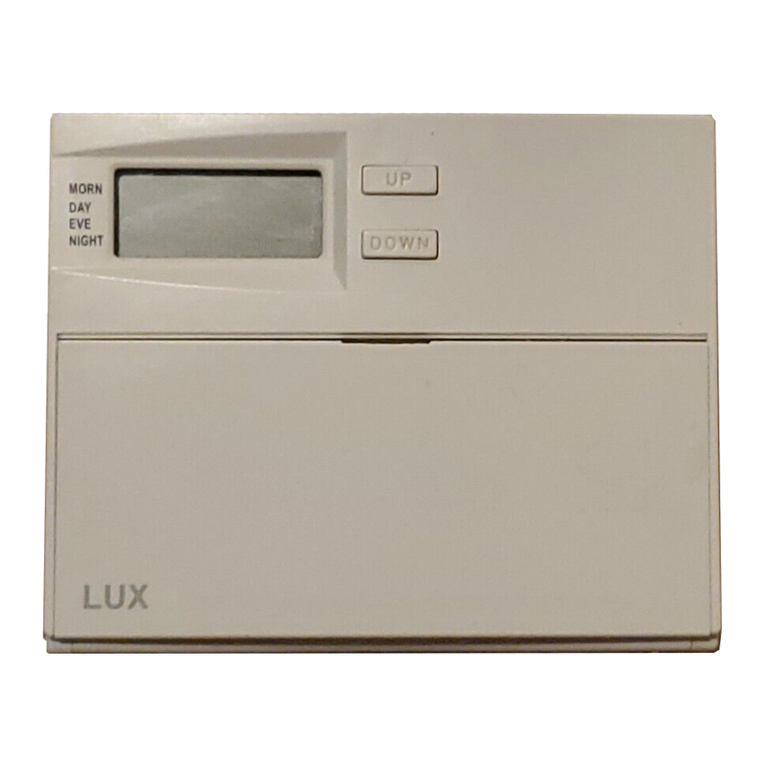
LUX
LUX SMART TEMP TX500b Series User manual
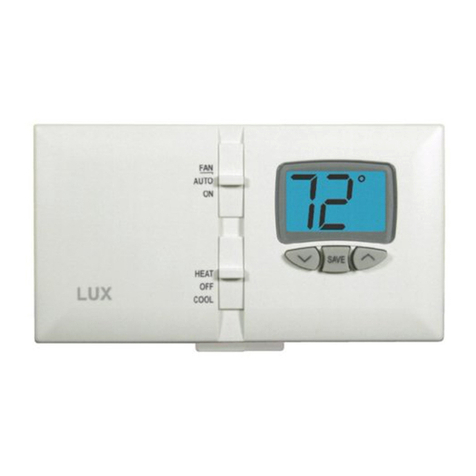
LUX
LUX DMH110b User manual
Popular Thermostat manuals by other brands

Charmeg
Charmeg MP-R user manual

dixell
dixell WING XW40LS Installing and operating instructions

Network Thermostat
Network Thermostat NetX X7C-WIFI Installation and programming manual

Radio Thermostat
Radio Thermostat CT80 Operation guide

HAI
HAI Omnistat RC-120 installation manual

Lennox
Lennox iComfort E30 Installation and setup guide

Lux Products
Lux Products PSD011Ba Installation and operating instructions

Computherm
Computherm Q20 operating instructions

Heatmiser
Heatmiser neoStat user manual

Mars
Mars HEAT CONTROLLER IR Wireless Thermostat user manual

Saswell
Saswell SAS920XWHB-7-S-RF User manual and warranty card

Aircalo
Aircalo TFP1-ET85P2 operating manual
